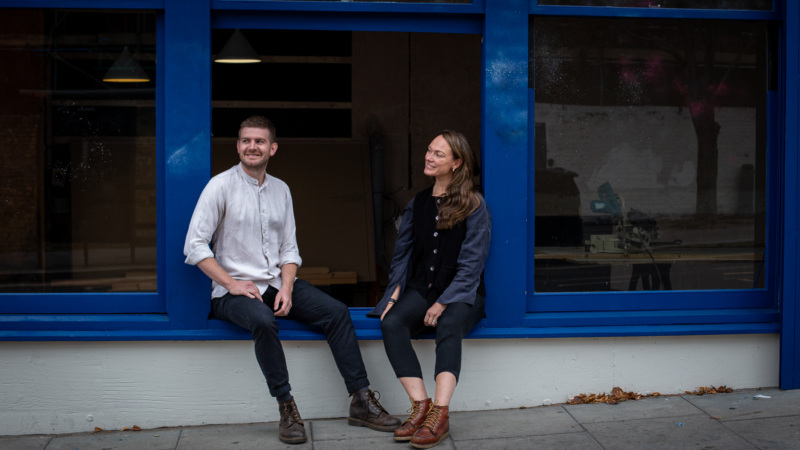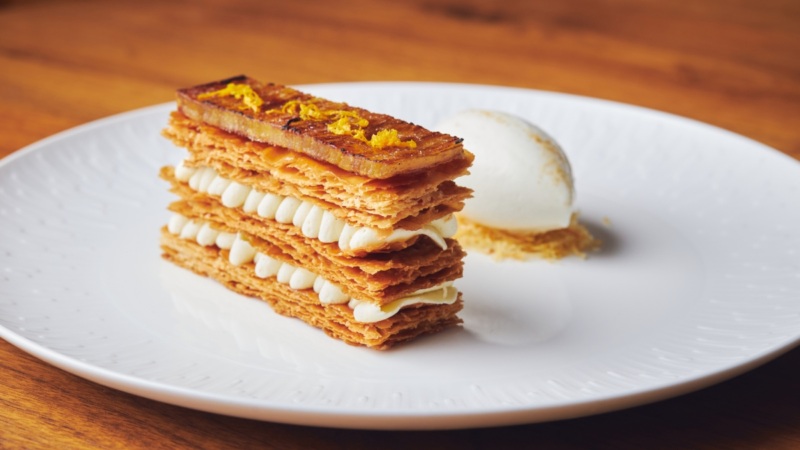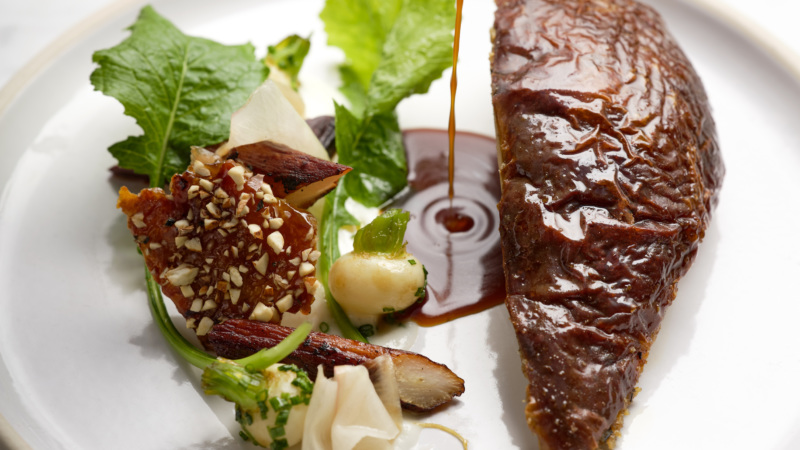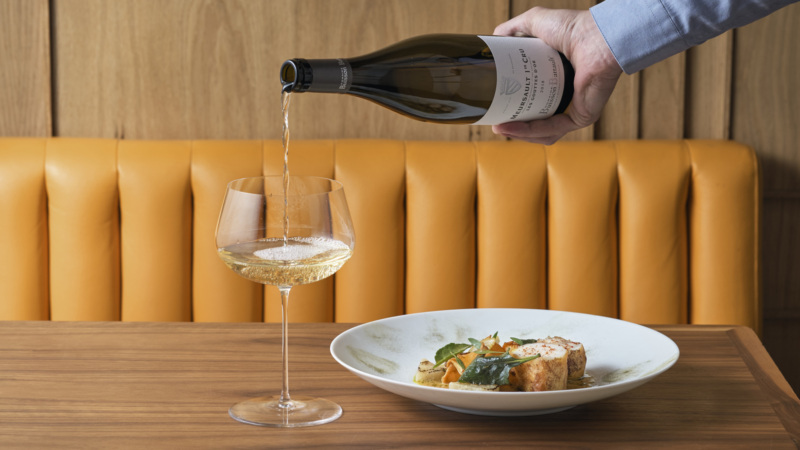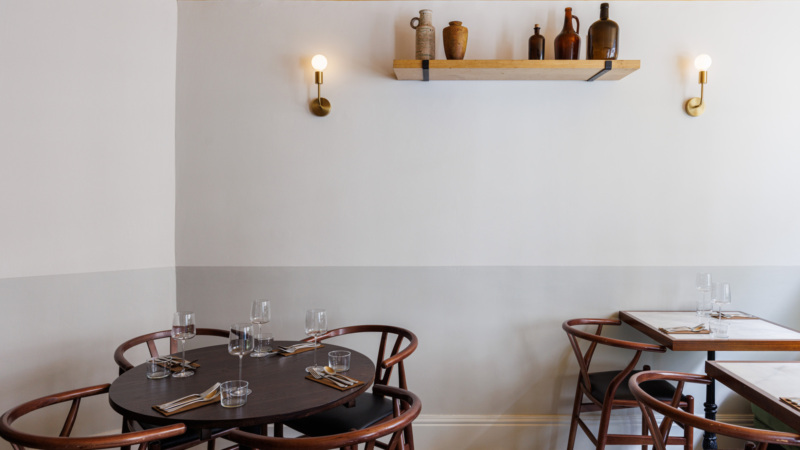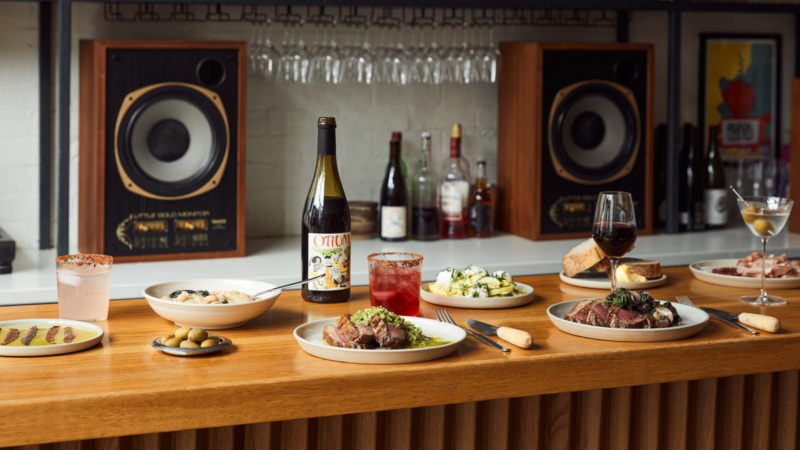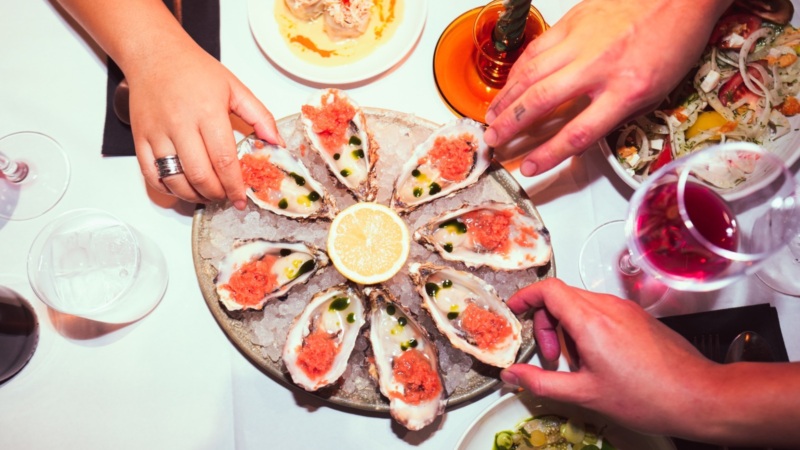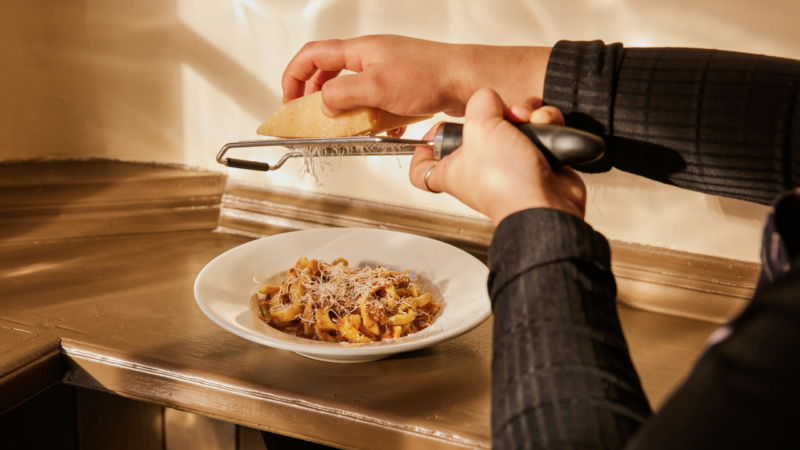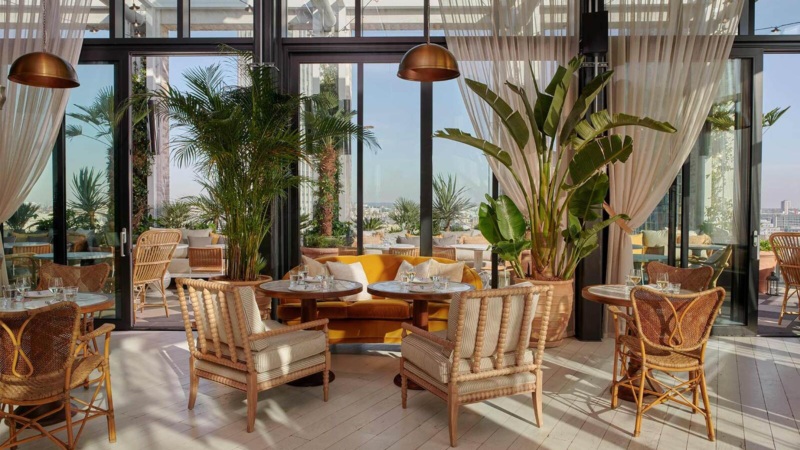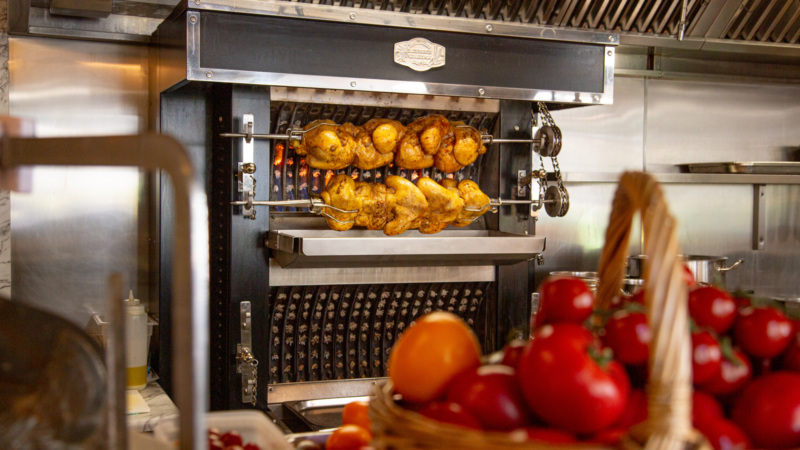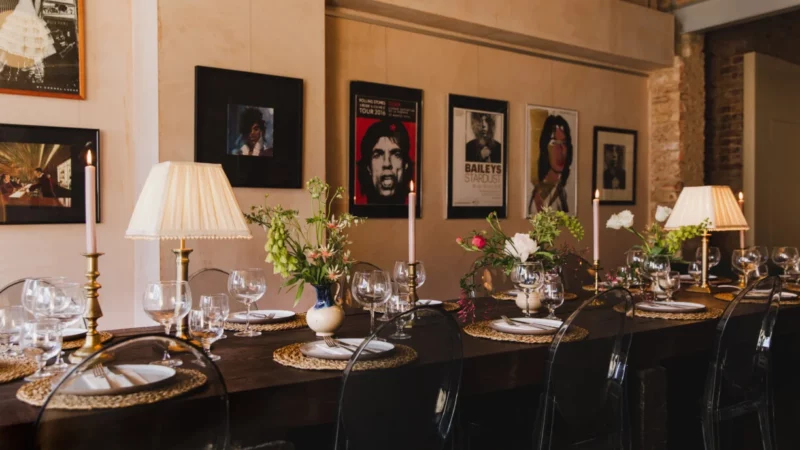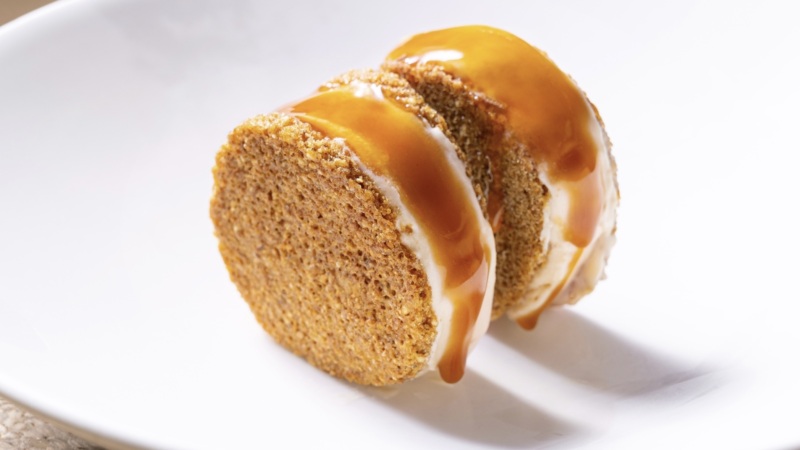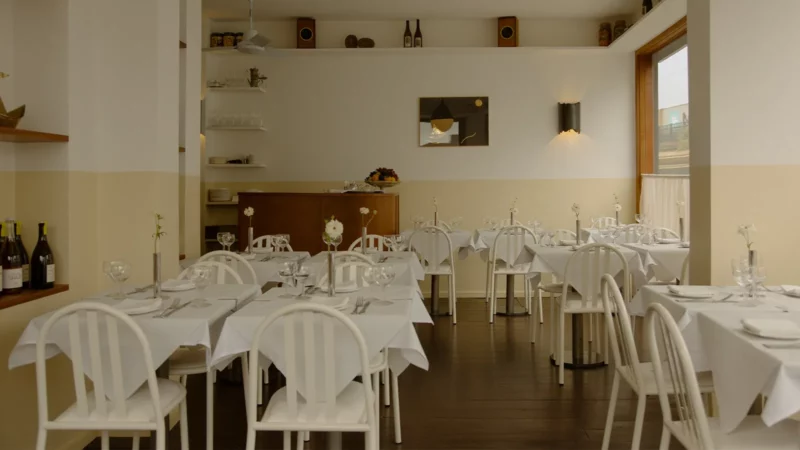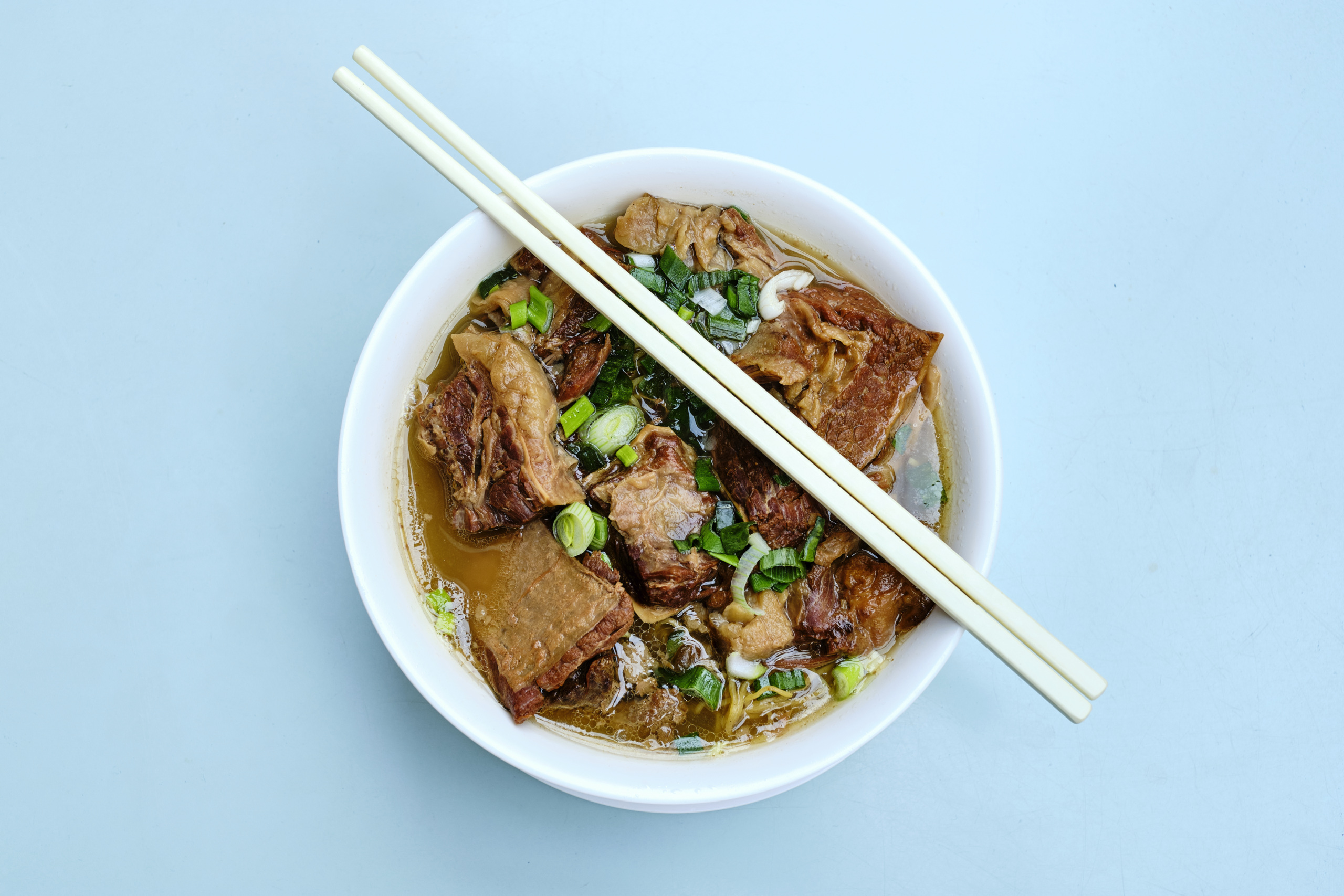
Chinatown’s Old Soul, in a Bowl of Brisket Noodle Soup
With hindsight, it’s fair to say that the brisket noodle soup at Wong Kei almost made me drop out of university. Having realised that sitting in clinics for the rest of my life wasn’t for me, I started skiving off entire afternoons and going anywhere that didn’t begin and end with Northwick Park station. Slumping home felt like defeat; Soho was still a mysterious network of unfamiliar streets. But in Chinatown’s milieu, I felt reassuringly invisible and, as somewhere comfortingly familiar, was where I ended up often.
I knew that you could eat well in Chinatown for less than a tenner, and for many, it was a toss-up between Cafe HK, Cafe TPT, and HK Diner — all cafes specialising in fare that, in Hong Kong, would be prepared at an open air stall, known as dai pai dongs. Wong Kei, an ageing behemoth that resembled the tourist traps nearby, seemed to have been created expressly to swallow entire groups of unsuspecting visitors into its gaping maw. Then again, it had the reputation of being cheap; I didn’t have the means to choose, so in I went.
When it opened in the 1980s, Wong Kei was one of the largest Chinese restaurants in Britain, with space for over 500 guests. Taking over an old Art Nouveau building on the western edge of Chinatown (previously the site of Lee Ho Fook, another Cantonese restaurant), the space was part of an ambitious rollout that also included multiple bars, clubs, and a casino, in stark contrast to the mostly family-owned restaurants that made up the area’s majority.
The perfunctory, anonymous canteen area where I always sat, was, and continues to be, a boon for solo diners idly scrolling between bites of wontons. Further inside, several floors of vast, circular tables can accommodate a small army, with recognisable visual accoutrements of western Chinese dining culture — red upholstery, historical murals — reminders of ownership’s efforts to keep up to date and appeal to a broader audience.
*****
The brisket noodle soup was the first thing I ever ate at Wong Kei, and years after that initial foray, I’ve returned many times. It’s the one dish I still associate the most with Chinatown, and the one plate I miss the most when I’m away from the city. A comforting noodle soup is easy to understand, and transcends cultures — Emilia-Romagna’s tortellini in brodo, Jewish penicillin, Assam laksa. Even the pot of mohinga my grandmother always had on the go at our house in Rangoon, in case a neighbour or someone from our church stopped by.
Like the immigrants that built the restaurant and laid the foundations for so much of London’s Chinese community, Wong Kei’s version is Cantonese, specifically from Hong Kong. And if once commonplace, Cantonese establishments are becoming fewer and far between in Chinatown.
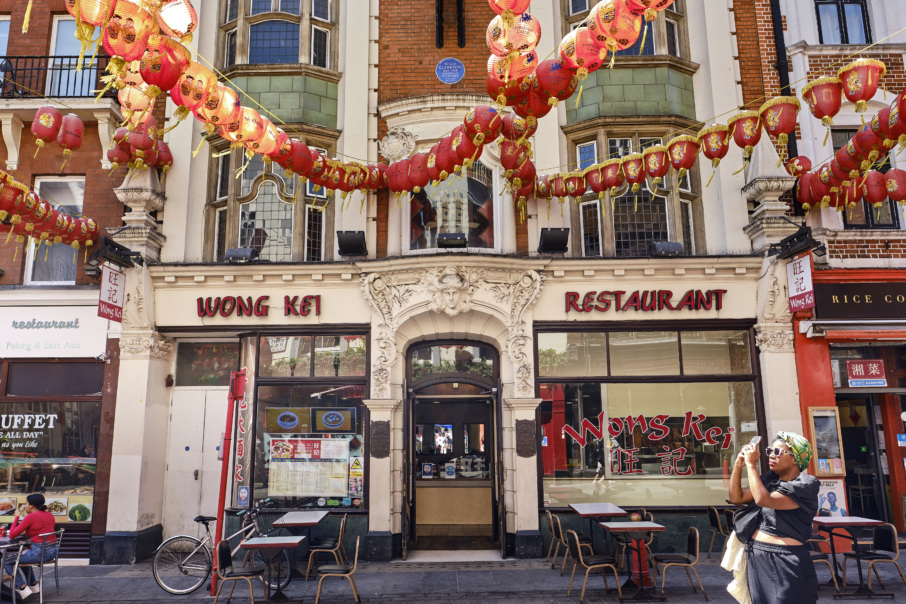
Arriving piping hot, I like to gently push my spoon into the bowl and watch as the broth gathers — a translucent, shimmering suspension of liquid umami — before raising it to my lips for a first sip. It’s always scaldingly hot, but rich and emphatic, tasting of long-simmered bones, ginger, cloves and star anise, the product of hours spent skimming and reducing.
The beef is always fall-apart tender, and astonishingly plentiful. A cursory turn of the bowl usually reveals gems, which is to say, meltingly soft pieces of fat or tendon, as pleasurable to eat as anything from a three-star restaurant. And unlike their slippery cousins made of rice, slender egg noodles willingly lash themselves to chopsticks with little complaint, chewy and firm, a dream to slurp down between spoonfuls of still-hot soup.
Like the best one-plate dishes, the dish’s simplicity belies the labour behind it: Some versions in Hong Kong simmer the broth for over 24 hours, and before the availability of commercial egg noodles, the city’s dai pai dongs had to rely on noodles painstakingly made by hand. At Wong Kei, it’s one of the most popular dishes for a reason.
*****
If, in another life, Wong Kei made headlines for apparently revelling in its theatrical rudeness to clientele, today it’s an elder statesman for the small network of streets that make up Central London’s Chinatown. Despite various evolutions to reach its current incarnation, next to the slick, modern franchises selling Chinese desserts, bubble tea, hotpot, and other regional cuisines for a predominantly mainland clientele, Wong Kei and others of its ilk look positively ossified in comparison.
Along with Hung’s and Cafe TPT (for Cafe HK and HK Diner have long closed), the restaurant is one of the few remaining establishments to specialise in such fare, in itself a stubborn statement in a neighbourhood that represents a nexus of global and local market forces. As London’s Chinatown stands at a crossroads, the relevance of a place like Wong Kei and others of its ilk in a climate that appears to favour the new and modern also begs the question — today, who is Chinatown for?
The original families who built the neighbourhood in the 1970s and ‘80s have mostly long moved on, forming communities in areas as far flung as Colindale and Croydon, the purpose of the original businesses — to provide a better life for the next generation — mostly fulfilled. Post-coronavirus, the expats and students from the mainland will surely return, along with the tourists, but will these communities stick around to build a lasting legacy, or will the area be consumed by the desire for profit, razing any lasting sense of the area’s historical and cultural value?
And while the desire to preserve the area’s is understandable, surely the luxury of choice — long lamented as something that the previously homogenous area lacked — is a good thing? The standoff between longtime businesses and their landlords has often been painted as a David and Goliath battle, but perhaps change will allow the area to remain dynamic and afford the opportunity for longtime businesses to reinforce other areas that are showing the first shoots of developing their own Chinatowns. These are complicated, emotional questions with no clear answers, and no clear winners or losers.
*****
With the discussion around Chinatown’s identity and fate likely to continue into the foreseeable future, it’s undeniable that for now, at least, the neighbourhood’s soul lies in restaurants like Wong Kei, Cafe TPT, and other old-timers. A dish like beef brisket noodle soup resonates because every sip of broth and slurp of noodles is a reminder of the Cantonese who arrived here to build the restaurant and the neighbourhood from the ground up.
While Chinatown is, for now, synonymous with its currently defined borders and the outside forces that define it, the only constant that seems guaranteed is change; and while there’s scope for optimism that a new generation will take the reins and build exciting new traditions on top of what already exists, it’s a decision that requires a measure of risk and foresight on the part of a few individuals to decide what is and isn’t of value.
David Paw is Resy’s international editor. Follow him on Instagram. Follow @Resy, too.

